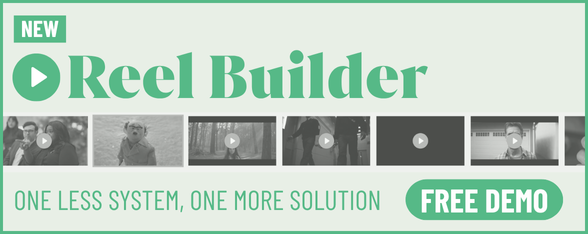
Scope 3 in Advertising Production

As the climate emergency increases, brands face increasing pressure to be more ethical, creating a very compelling case for carbon and ESG reporting in advertising and production (e.g. see the recent Patagonia review). Brands need to ensure that their value chain (that’s you), is as green and ethical as possible, and that means reporting on your emissions.
Carbon reporting falls into three categories, or scopes, 1,2,3.
1 and 2 are super easy.
Scope 1 is what you burn i.e., energy used in gas boilers or company vehicles. While Scope 2 is the fuel you buy, electricity. Aside from the energy you burn or buy, everything else is Scope 3. This Scope 3 ‘bucket’ is where around 70% of your companies emissions (or more) may lie, and therefore where most of your environmental impact is.
The Scope 3 bucket is divided into 15 sections and contains stuff like flights, waste created, water used, plastic used, and all the other operational stuff, so it’s not that hard to map, measure and reduce the carbon. However, also contained in scope 3 is your own supply chain, and this is also what you’re required to examine closely.
Many companies have hundreds or potentially thousands of suppliers and indeed you will be asking the same questions of these suppliers that your clients are asking of you.
• What carbon targets do they have in place?
• What sustainability measures are they taking and how can they evidence that?
• What’s their net zero policy?
• Does their product or service consider the environment?
• What’s the lowest possible carbon version of what they supply?
• Are they BCorp, SBTi, GRI compliant?
You will then need to evidence how much of your own supply chain you’ve examined and passed as acceptable.
In post-production, a huge carbon impact comes in the long-term storage of the creative assets. For a typical TV advert that means storing the rushes amounting to around 3 to 4 terabytes of material for at least 5 years, as laid out in the contract.
But how to store them in a low carbon way? Production is moving away from using newly bought hard drives for long-term storage. It’s not particularly safe as data loss rates is relatively high, but more vitally important, is using a resource heavy piece of equipment only a few times, then leaving it on a shelf for years to deteriorate. Hard drives are meant to be used for many years, not a few weeks. It’s also a myth that insurance companies (in the UK and US) require you to use a new hard drive for each shoot, this is just untrue, they just need to be checked and be in good working order.
Server and cloud storage has also come under close scrutiny in recent years for the massive carbon impact of energy and water use. Indeed in London, house building has had to stop because data centres are gobbling a large portion of the local grid electricity, a problem that is set to continue until 2035. In the U.S, data centres are using up drinking water just to service the cooling of the machinery, putting many residents at extreme risk in drought prone areas. The environmental impact of the rapid turnover and scrapping of thousands of tons of equipment or the energy used in cooling, refrigerants, energy in duplication of data for redundancy or energy used to send and receive data between servers is also not mentioned in any of their environmental reporting. Claims of carbon neutrality of these data centres is usually based on their scope 2 renewable energy consumption, which in itself is questionable as they often use renewable energy credits rather than purchasing location based energy. So, putting your long term, rarely accessed rushes on to Google or Amazons servers only exacerbates these issues.
Data centres and hard drives are integral to the functionality of our jobs and lives, but we need to stop storing massive amounts of long term, rarely accessed data on these formats and use a sustainable method of archiving instead.
Film Locker uses LTO (linear tape open) a safe, secure and low carbon alternative to storing rushes on servers or hard drives for long periods of time. The tapes are low carbon and require no specialist facilities to store them in, and no ongoing power. The data can be accessed at any time and retrieved within a day. Film Locker puts the data back onto a hard drive and sends it back to you ready to work with. They keep duplicate copies of data on LTO tapes and create a viewable list of assets stored on an online, securely accessed database, so your production teams know exactly what they have backed up.
Essentially if you’re looking into your scope 3 supply chain, then, using a long-term responsible supplier will enable you to report that this section of your postproduction is compliant. This is especially important as this element of reporting is likely to be included in future iterations of industry production calculators. Unlike other, traditional storage companies to the industry, who merely store a copy of your data on one hard drive, or a single LTO tape, Film Locker ensures the security and footprint of your data is done in an ethical, workable and sustainable manner.












